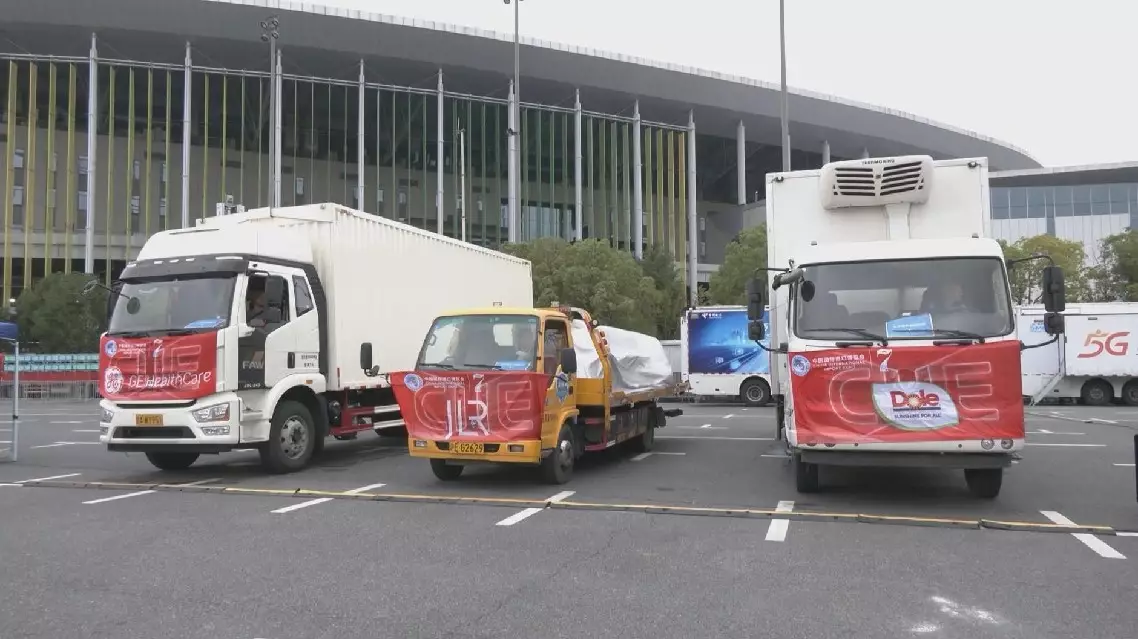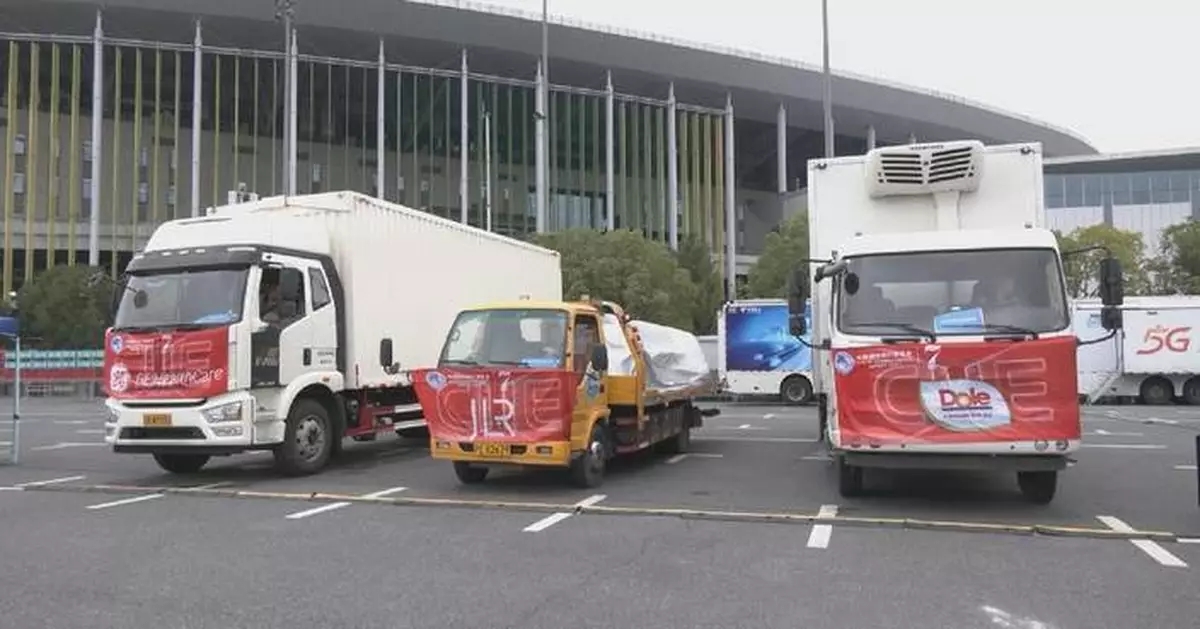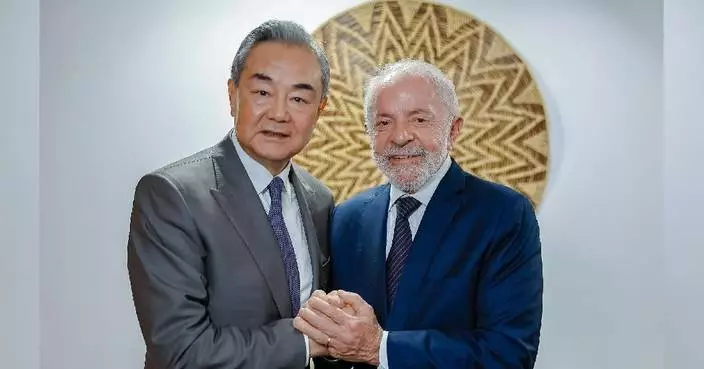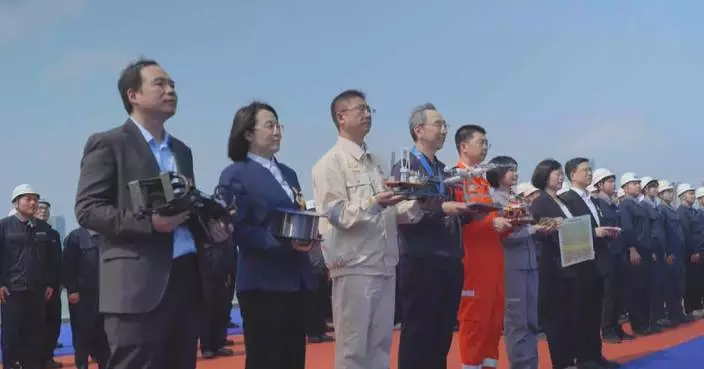The first batch of exhibits for the 7th China International Import Expo (CIIE) arrived at the venue in Shanghai on Tuesday, marking the acceleration of preparations for the November event.
The expo, the world's first import-themed national-level exhibition, is scheduled to take place from Nov 5 to 10 at Shanghai's National Exhibition and Convention Center.
Five participating companies brought a variety of products, including avocados from South Africa and a cutting-edge PET/CT molecular imaging system for nuclear medicine. These will be displayed in the food, automobiles, and medical equipment zones.
"We are showcasing one of the most advanced molecular imaging systems in nuclear medicine for the first time. This product features a comprehensive ecosystem solution for the early detection and precise treatment of Alzheimer's disease. This expo marks its global debut," said Zhong Luyin, Chief Communications Officer of GE Healthcare China, a company focused on improving hospital efficiency, enhancing diagnostics and promoting patient health through integrated solutions, services and data analytics.
"We believe the introduction of South African avocados will bring fresh flavors to Chinese avocado lovers, offering high-quality produce year-round," said Wang Na, market director at Dole China, one of the world's leading producers and distributors of fresh fruit.
The setup period for this year's CIIE will run from Oct 25 to Nov 4. Some booths began early installation on Oct 19, and by Nov 2, all major structures, including product displays, are expected to be in place.
Since the first edition in 2018, a total of 142 countries and international organizations have participated online and offline in the CIIE, including 117 countries participating in the Belt and Road Initiative (BRI) and 26 least-developed countries.
To date, more than 70 countries and international organizations have confirmed their participation in this year's edition, exceeding the number from the previous session.

First batch of exhibits arrive for China International Import Expo
U.S. tariffs on Cambodia, which were set at 49 percent, have sparked concerns among the Southeast Asian country's key export industries such as garment manufacturing amid the ensuing economic uncertainties.
On April 2, U.S. President Donald Trump announced the 49 percent "reciprocal tariff" on goods imported from Cambodia, the highest among all countries. Days later, the U.S. reduced the so-called "reciprocal tariff" to 10 percent for 90 days, offering a window period to Cambodia for negotiations with it.
Cambodian businesspeople say the tariffs have the potential to wreak havoc on the country's manufacturing sector, which, according to data from the World Bank, makes up around a fifth of the country's GDP.
"For U.S. manufacturers, definitely, there will be a big impact. If manufacturers are focusing on U.S. products, they are now in the middle. They don't know what they should do at the moment because the tariff now from Cambodia to the U.S. is actually quite high," said Dr. Ben Li, a Hong Kong investor in Cambodia and Chairman of the Cambodia Chinese Commerce Association.
Nevertheless, Li sees the tariff hike as an opportunity to export more Cambodian goods to the European Union, where a majority of Cambodian exports enjoy duty-free status.
"I always say there will be a light (at the end of the tunnel.) Even now, the U.S. tariff is so high, it's going to be so high after 90 days, we don't know. But, there's still a big market to Japan or to the European Union. There's still a big opportunity there," he said.
The Cambodian investor also believes the development of major infrastructure projects will help support Cambodia's economy.
"Especially the new canal and then the new airport, and the railways which connect to China. I believe once the logistics and infrastructure are built up, it can help the whole country's economy. By reducing the transportation costs, it can also mitigate the tariff costs," he said.
Cambodia and the U.S. held their first tariff negotiations on April 16, with more expected to follow. Local experts said the stakes are high for the country's workers.
"If this negotiation fails, there will be a significant impact. It will include the garment and travel goods sector. These sectors consist of about 1,068 factories and 930,000 workers. The income generated from these sectors is about 3 billion dollars per year. So it would significantly impact Cambodia's economy, jobs and incomes," said Chey Tech, a socio-economic research and development consultant from Dynamic Alliance Consulting.
Despite the potential risks, Tech expressed his optimism about a positive outcome, citing Cambodian Prime Minister Hun Manat's letter to Trump on April 4.
"The Prime Minister's letter confirmed that Cambodia would reduce the tariff rate for U.S. goods to 5 percent. Second, Cambodia is the least developed country. Third, Cambodia produces goods that the developed countries won't produce. We asked whether the U.S. would be able to produce these low-cost products. It cannot," said Tech.
In 2024, Cambodia exported goods of 9.9 billion dollars to the U.S., making it the country's largest market, accounting for 37 percent of Cambodia's total exports.

49-percent US tariffs sparks worry among Cambodia's key export industries




















































